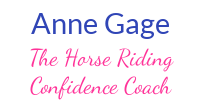A common problem that many horse owners have is dealing with a horse that doesn’t want to be “caught”. This is particularly frustrating when the horse will allow itself to be caught some days, but not others or will come for the barn manager but not for his owner.
Often, the reason a horse does or doesn’t want to be caught is about her previous experience with people or the current relationship with her owner.
Horses that like to be with their owners are OK with what happens to them when they go with that person are willing to be caught & will often come to the person … no catching necessary.
Pay attention to the word we use when talking about getting our horses … “catch”. Predators catch their prey. But, prey animals’ avoid being “caught” as their survival depends upon their ability to get away. Are you hunting your horse? What we ultimately want is for the horse to willingly come to us because he wants to be with us.
Follow these 5 tips to help build a more trusting relationship with your horse and have her come to you rather than needing to be caught.
- Walk towards the shoulder not the head. Horses do not like impulsive (pushing) energy going towards their head or neck. If you walk directly towards your horse’s head, your horse will move her head away from you. As the head turns away the body generally follows and the horse moves away from you. Horses move in arching paths. Walk a “rainbow” that arches away from her head and towards your horse’s shoulder. Horses read your entire body so be aware of your body alignment so that there is no push from your hips, core or shoulders towards the head or hips.
- Approach like a friendly horse not a predator. Predators creep up on their prey until they get close enough to pounce on them. This stealthy body language puts horses on alert and ready to flee. A friendly horse approaches another horse with her neck extended and her head level or low. This passive body language invites the other horse to reciprocate so they can exchange breath. Mimic the friendly horse approach by softening your core energy and extending one hand (palm down) to represent the horse’s lowered neck.
- Push her away. If your horse turns her hindquarters towards you or runs away when you walk towards her, push her around. Separate your horse from the rest of the herd by pushing him or her out of the group. Put yourself between your horse & the rest of the herd. Horses understand that being sent out of the herd is a punishment for inappropriate behavior. A rude horse will get pushed out of the herd by a higher ranking horse and kept out until she shows signs of respect.

- Back up to invite the horse to approach you. As soon as your horse looks towards you – even a little bit – take a few steps backwards. This passive body language is an invitation for the horse to approach you. (Don’t use this technique with a horse who is behaving aggressively. Get help from an experienced horse person or professional trainer with an aggressive horse.) Don’t be discouraged if the horse leaves or turns her hindquarters towards you again. Just push her away again and then be ready to draw her back.This tactic may take a lot of effort on your part the first few times you try it. Eventually, the horse will stop trying to run back into the herd, face you, stand with front feet square (a sign of not needing to move) and lower her head. Your horse may not give in easily. But the effort pays off in the long run.

- Analyze your relationship with your horse. If your horse enjoys your company and feels good about being with you, she will leave her herd mates to come to you. If your horse does not enjoy spending time with you, then you need to consider the horse’s previous experience with people as well as how you interact with your horse when you are handling, grooming and riding her. Is she engaged with you in a positive way and being a willing partner both on the ground and in the saddle? Or is she stressed, angry, resistant or shut down?
Developing a relationship with your horse based on mutual trust & respect creates positive, lasting results but requires consistent awareness, good body language, and empathy. The real diagnostic question is “Why doesn’t the horse want to be caught”.
The reason is ultimately about the relationship between the owner and his/her horse. Horses that like what happens to them when they are with you (i.e. how they are handled, led, groomed, tacked, ridden) don’t need to be “caught”. When your horse trusts you, she gives herself to you.
Click here to watch my video of these techniques being used to catch an untrusting horse.
There are lots more practical and in depth tips on improving your Confidence and your Partnership with your horse in my book “Confident Rider, Confident Horse: Build Your Confidence While Improving Your Partnership with Your Horse from the Ground to the Saddle”. Click here to order your copy today!
